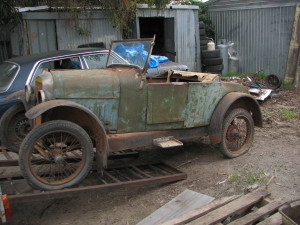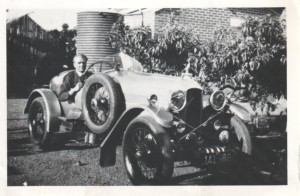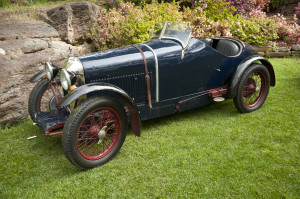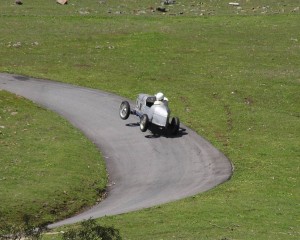Amilcar models in Australia
The CC

The first Amilcar model made in France, and also the first model imported into Australia. The earliest example in Australia is an 1921 model with folded front axle, split rear axle and the radiator cowl holds water and is not removable. These Amilcars earned a reputation for the marque as reliable, simple vehicles, suited to Australian conditions. Success and a good reputation led to a strong representation for the later models over the next decade.
The early models were quite different from later CC’s and it seems the success and potential of these cars led to further investment in the Amilcar factory which increased reliability and user experience. The engine was small – only 55mm in bore diameter, resulting in 900cc capacity – but despite this the little cars were pushed along adequately.
The CS

The later CS model which was nearly identical to the later CC model, which incorporated a Banjo style back axle and a forged front axle was imported into Australia in substantial numbers. There seem to be many left over parts for these cars which have survived – far more than the cars which are left on the road! The engine was tweaked and increased to 58mm and a slightly improved camshaft and valve timing was fitted. The CS model was distinguished by the Amilcar trademark gutter style mudguards, which were also fitted on the CGS or grand sport. These are nimble little cars and their light weight mean that the performance is nearly identical to the later CGS. However, braking is only provided on the back wheels!
The C4
The Amilcar C4 arrived in Australia in 1924, and was sold along side the CS for the first year as a larger alternative with a few more comforts. Those comforts consisted of tourer style bodies, although there were many with slightly sporting bodies also. The same splash fed engine from the CC and C4 was used with some minor tweaks. In sported a 58mm bore with slight adjustments in cam timing and a few subtle differences like extra breathers in the cylinder block and cooling fins on the sump. The biggest change was a longer wheel base, with a special four brake shoe rear axle which enabled one set of shoes to operate from the foot brake and the other from the hand brake. To achieve this slightly wider brake drums were used. Most rear axles were fitted with a differential to enable easier tight cornering. The chassis was longer than the CC, CS models and there was an added rear section to support the chosen body work. This model was still sold into the late 1920’s in Australia and by then they were fitted with a larger steering box from the G series and also some were imported with front wheel brakes. Only one of these cars with front brakes has survived although there are some bits and pieces around indicating that there was more than one imported. Some say that the C4 model is the most reliable of all Amilcars ever built and also the most user friendly and fun to drive.
The CGS
This is the car which the Amilcar factory was beginning to become famous for. Unfortunately, it appears that none of the twin overhead camshaft C6 series Amilcars made it to Australia, so this model served the purpose of fast road touring and racing in the 1920’s. You don’t need to look far in motoring history in Australia to find evidence of one of these models competing in races or speed trials, often more so than the later CGSs. The car was much more improved and refined than the earlier models, and included a complete re-design of the chassis and engine. Complete with four wheel brakes, pressure lubrication within the engine and updated steering, it is clear why this car was successful in Australia. The only downside was power was a bit lower compared to some other vintage cars of the era, but this was made up with the nimble handling, and braking which is better than any other vintage car of the era. The young boy racer of the 1940’s in Australia took advantage of the fantastic chassis of an Amilcar and often shoved larger engines into, to remain competitive in Australian racing.
The CGSs
A rare car in Australia, and en evolution of the CGS. Using the same 1100cc engine, but a more developed camshaft, the engine came with a slight increase in power. The CGSs featured a shorter wheelbase, larger brakes and a lower stance on the road hence why the cars are designated with the extra “s” which stands for surbaisse, the French word for lower. There may only be one car in Australia with it’s fully imported Duval body. All others were made by local coach builders, a result of a import tax designed to keep the industry afloat. The later M series long stroke CGSs, never made it to our shores and the only cars imported here were with the standard stroke engine. There are about 6-8 CGSs Amilcars in Australia.







0 comments